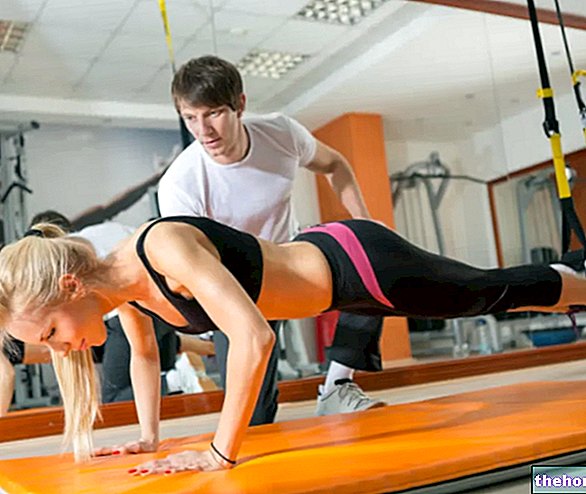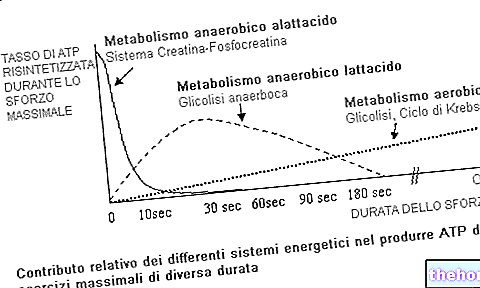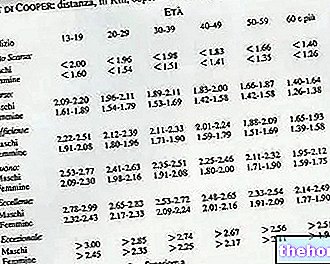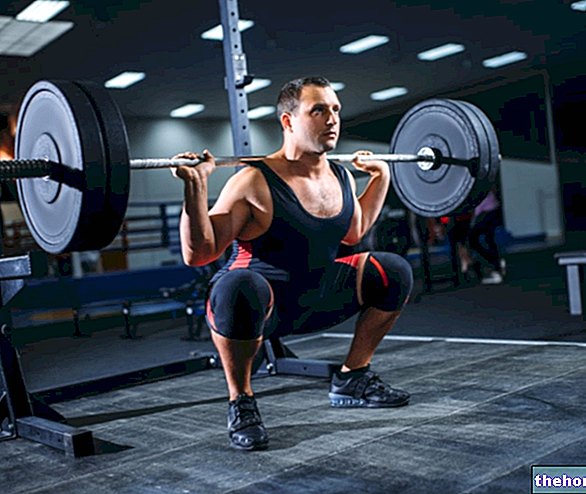Edited by Dr. Antonino Bianco
Knowing the heart rate (HR) that is reached when practicing aerobic training is a bit like knowing how to cook. Knowing what temperature the oven must be to get the best cooking is as important as knowing the HR at which heart and lungs they are more efficient.
Whatever your goal (lose weight, run a marathon or improve performance in a sport), to achieve it successfully it is essential that you know within what limits to work (the optimal aerobic zone). You will thus be able to control the organic response to the different levels of effort and optimize the effectiveness of the training sessions.

In order for the cardiorespiratory system to work with maximum efficiency and the body to use a greater quantity of fat, it is necessary to work between 65 and 85 percent of the theoretical maximum heart rate (HR Max *): this is the optimal aerobic zone.
For example, using Cooper's formulas, the optimal aerobic zone calculation for a 35-year-old male is: 220-age = 185 beats per minute (Bpm). 65% of 185 (0.65 x 185) is 120 Bpm and 85% of 185 (0.85 x 185) is 157 Bpm. 120Bpm and 157Bpm.
To check your HR during your training session, use a heart rate monitor or measure it manually. In manual measurement, the heart rate is measured on the wrist or neck. The pulsations should be detected with two fingers and not with the thumb. Count them for 15 seconds, multiply by 4 and get the number of beats per minute.
The heart rate monitor is the simplest and most accurate tool to measure the HR during training. If you do not have a heart rate monitor and do not want to interrupt the training session to measure the HR manually, etc. some tips for you:
Typical resting heart rates for a 35-year-old male (60-90 Bpm)
The 35-year-old walks briskly and shows no signs of fatigue (50-55% of HR Max; 92-102 Bpm)
The 35-year-old walks uphill at a fast pace or runs on the plains with a slow pace and shows signs of mild sweating and skin redness (60-65% of HR Max; 110-120 Bpm)
The 35-year-old runs at a medium pace, breathes deeply and converses with moderate clarity (65-75% of HR Max; 120-140 Bpm)
The 35-year-old runs at a high pace, breathes with difficulty and converses with difficulty (80% of HR Max; 150 Bpm)
The 35-year-old runs at a very high pace, shallow and frequent breathing acts, poor mental clarity and significant sweating on the face (87-92% of HR Max; 160-170 Bpm)
Maximum effort, unsustainable for a long time (92-100% of HR Max; 170-185 Bpm).
Aerobic training is essential in any good fitness program: not only does the cardiorespiratory system work optimally and improves physical fitness, but it has many other advantages, such as improving concentration and reducing the risk of cardiovascular disease. .
* ACSM's Guidelines for Aerobic Training
° The Cooper Institute, Dallas, Texas; Guidelines for Heart Rate Monitoring (1976-2006)




























